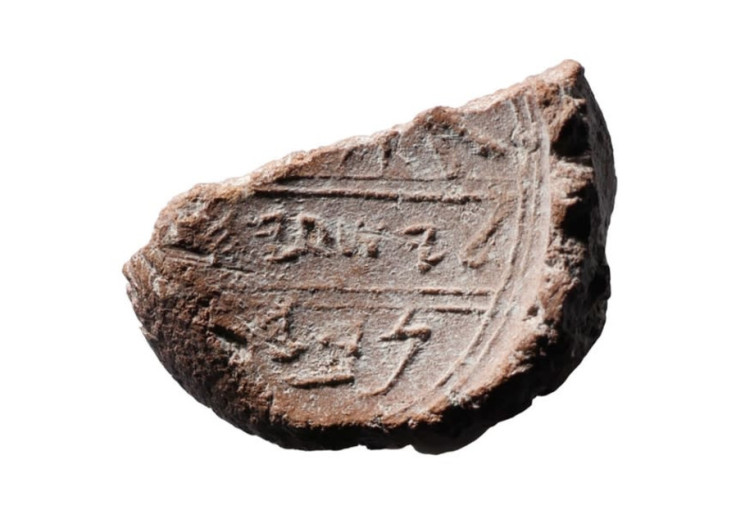Archaeologists may have found doomsday prophet Isaiah's 2,700-year-old seal
A 2,700-year-old clay seal impression which may have belonged to Isaiah was dug up in Jerusalem.

Archaeologists believe they may have found the earliest physical evidence of doomsday prophet Isaiah, for whom the Bible's Book of Isaiah was named. He advised King Hezekiah in the Kingdom of Judah during the 8th century BC.
A 2,700-year-old clay seal, or bulla, was found at the bottom of the southern wall of the Temple Mount compound in Jerusalem by Dr Eilat Mazar from the Hebrew University of Jerusalem. It was alongside 33 other bullae stamped with the seals of their owners, one of which is impressed with the personal seal of King Hezekiah and others with the relatives of an important individual named Bes.
The clay seal of most interest, however, is one belonging to "Yesha'yah[u] Nvy[?]", for which Mazar said the most obvious initial translation is the prophet Isaiah, although "Nvy" remains untranslated.
Mazar admitted it was possible that the seal could belong to one of the king's officials named Isaiah with the surname Nvy, especially as it seemed likely to be a personal name. If it had an aleph letter after it, the word would mean prophet, but the damage to the seal means it is impossible to know whether there was one.
The bulla's upper end is missing and the lower left section is slightly damaged, key hurdles stopping definitive identification.
Writing in the Biblical Archaeology Review, with an article entitled "Is this the Prophet Isaiah's Signature?" Mazar said: "Whether or not the bulla we found in the Ophel excavations is the bulla of the prophet Isaiah, it remains, nevertheless, a unique and fantastic discovery.
"Finding this bulla leads us to consider the personality and the proximity of the prophet Isaiah as one of the closest advisors to King Hezekiah—not only with regard to the events of his time, but also in assessing them from an informed perspective and foreseeing their influence over future events."
Mazar also explained why the close relationship between the prophet Isaiah and King Hezekiah and finding seals bearing their names so close together points towards the seal's importance. She wrote: "It would not be the first time that seal impressions of two Biblical personas, mentioned in the same verse in the Bible, were found in an archaeological context. In our City of David excavations (2005–2008), the seal impressions of Yehukhal ben Sheleḿiyahu ben Shovi and Gedaliyahu ben Pashḥur, high officials in King Ẓedekiah's court (Jeremiah 38:1), were found only a few feet apart.
"Furthermore, according to the Bible, the names of King Hezekiah and the prophet Isaiah are mentioned in one breath 14 of the 29 times the name of Isaiah is recalled (2 Kings 19–20; Isaiah 37–39). No other figure was closer to King Hezekiah than the prophet Isaiah."






